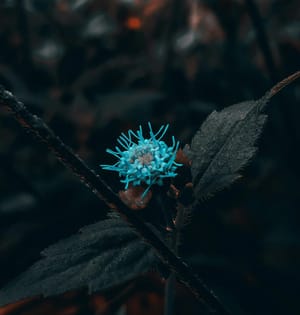Over many years I have been obsessed with the idea of color. It represents perfectly the mystery of consciousness. When we see a color, what exactly is happening in our brain? There is a particular brain circuitry that correlates to the experience of the color red. When red wavelengths of light hit your eye, cells called cones are stimulated, sending a signal through neurons to more specialized neurons in the brain that produce the experience. But the experience itself is something of a mystery. We only know it to some objective degree because most humans experience it similarly to one another due to the similar construction of their brain. We all similarly distinguish red from blue due to the function of a human brain to do so. You did not have to train that experience, only name it and distinguish it from others like it. Same is true for all the things we experience. We can differentiate sweet from savory, pain from pleasure, and harmonic from discordant. All of these experiences have associated brain circuitry that lights up when we experience them. But this association is just that; it does not fully explain the gap between circuitry and sensation.
If we zoom in far enough, we find the neuron to be the fundamental building block of the brain. However, it is quite difficult to imagine that one neuron equals one fragment of conscious experience. A single neuron seems to be a series of switches that pulse to communicate/relay signals to another; each neuron playing a game of telephone with the ones around it. In this analogy however, consciousness is not achieved by the completion of the game, but the playing of the game itself. All the while the neurons play, experience emerges. The end of the game is the end of the experience. As you gaze upon the rose, the neurons sing but one song: red. Color then, being defined by the game the neurons play or the song that it sings, is defined not only by the structure of the mind, but how it changes through time. Color is not a static mesh of brain cells, but their churning. Time is a prerequisite to color.
Even though we experience these things similarly, we each develop our own personal tastes, which is an entirely different aspect of our brain distinguishing its own preferences. And further, we all have a great many kinds of these experiences, an infinite amount, conceivably. From colors to taste and the sounds of music, to the simple joys of a boba tea or perfectly fresh baguette with a truffle oil dip or the most savory stroganoff that your friend's grandma made for Christmas. We have an inordinate amount of experiences which we have the potential to acquire and keep within our memory and never long enough to experience them all. But each of these experiences belies our symphony–neurons which sing together to create them, to create something more than a string of neurons and tissue. As so it is for our deepest emotions. When we fall in love, infatuated with the person we've invited out for dinner. Or when we lose a loved one well before their time. Or when we are betrayed and belittled. When we are in the depths of an endless sorrow, or the woe of uncontrollable mania. All of these, too, are songs our neurons sing. All of these too, are much more than a string of neurons and tissue.
We are then, in essence, more than the sum of our parts. More than the neurons and tissue which make us–we are the sound of its weeping, and the wetness of our eyes. We are the taste of Christmas lunch and the ringing of the church bells. We are the redness of the rose and the pain of its thornprick. We are everything we are and more.





Comments